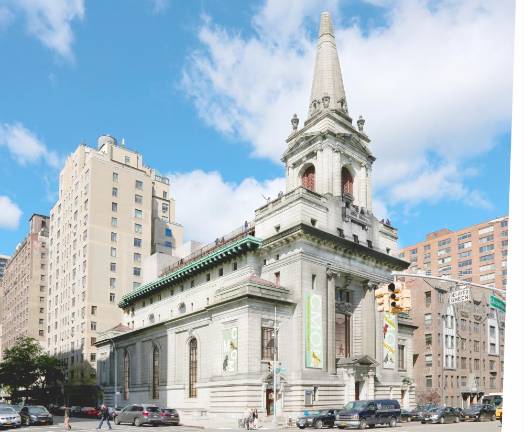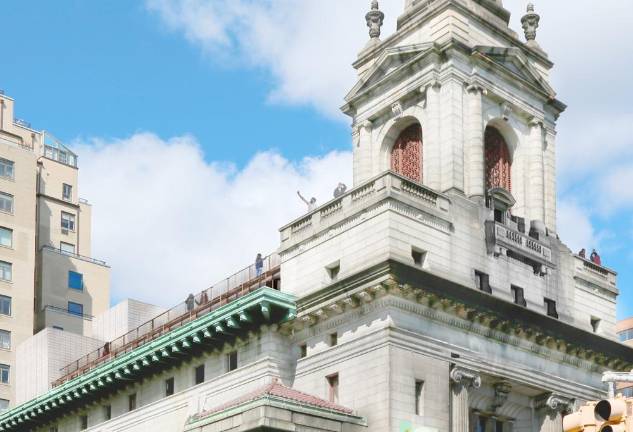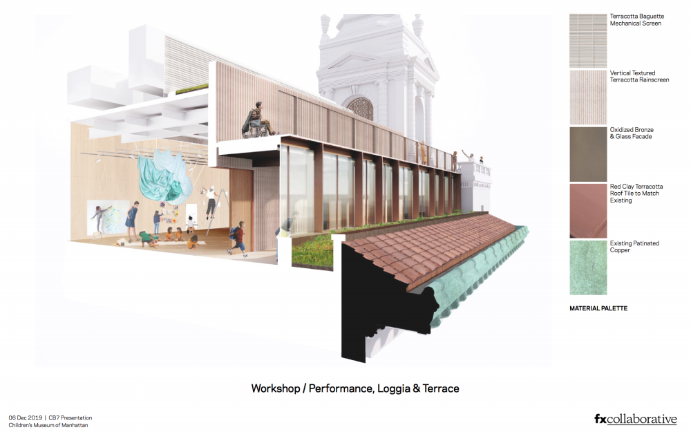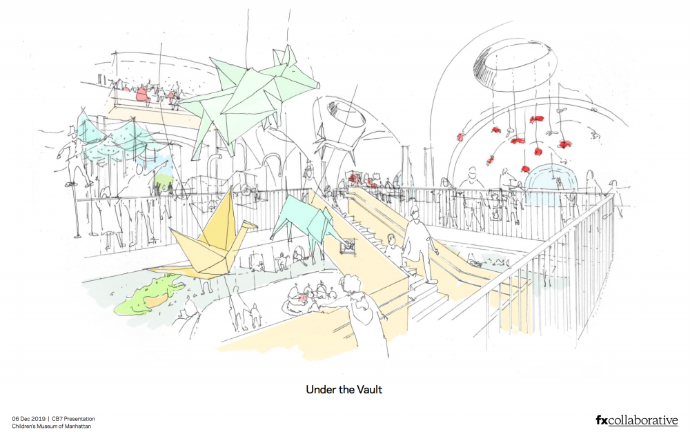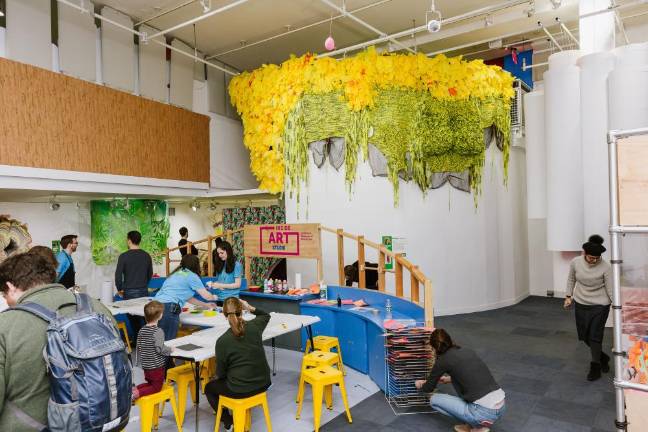Upper West Siders rolled out the welcome mat in early 2018 when it was revealed that the Children’s Museum of Manhattan had found a spectacular new home on West 96th Street across from Central Park.
Neighbors say they’re still thrilled that CMOM will occupy the former Christian Science church – and still hopeful it will be sensitive to the landmark’s needs as it relocates its programming and exhibition space.
But increasingly, residents, preservationists, architects and community leaders say they’re troubled by the museum’s aggressive plans to retrofit the interior and exterior of the monumental Beaux-Arts classic.
From new rooftop construction and the removal of signature stained-glass to the yanking out of walnut doors and granite steps, they say the proposed changes would mar the character of the 120-year-old church.
“You can’t take a family heirloom and treat it as a paint-by-numbers and break it up and change it around and then glue it back together again,” said Sean Khorsandi, the executive director of Landmark West!
CMOM says it will bring new life to a valued landmark, create a “place of wonder for families” and a “safe space for children” that adaptively reuses the building – while respecting its unique beauty and integrity.
“The building itself will become a part of the exhibition experience,” said Sylvia Smith, a museum architect at FXCollaborative, during a presentation for Community Board 7.
But critics savaged the plan, saying it would eviscerate the landmark’s look and scale:
It calls for building a one-story rooftop addition atop the existing top floor. Big chunks of the original sloped terra cotta tile roof would be removed. A glassy new workshop and performance space would rise over the roof beams. And a glassed-in walkway with park views would stretch out near the base of the granite steeple.
An Elevated "Fruit Box" on CPW
“It’s almost like a playground, a mini-theme park, up on the roof, and it will intrude into neighboring buildings that have been here for 100 years by taking the street noise and ground-level activity up to the roof,” said Susan Simon, founder of CPW Neighbors Association.
Added Dan Cohen, a Community Board 9 member, “The additions are like a takeout dinner tray slicing off a portion of the roof.”
CPW resident David Murphy offered yet another metaphor: “It’s like putting a big hat, or even a fruit box, on top of the roof, and it will ruin the top of the church and subvert the spirit of the landmarks law,” he said.
Meanwhile, the church’s irreplaceable stained-glass windows would be hauled off under the museum’s proposal, giving way to more modern transparent glass. They include one of the most stunning pieces of art glass in New York, a two-story-tall rectangular aperture with religious iconography that graces the main entrance on the CPW façade.
“The only artistic elements left in the church interior are the stained-glass windows, and with the light coming through, they’re really quite beautiful,” said Jay Adolf, the former chair of CB 7’s Preservation Committee. “In the best of all possible words, they’d be kept in place.”
Stripping them from the church would be an artistic desecration, Simon argues.
“Removing the stained-glass windows, with some of the finest turn-of-the-century art glass in New York City, would be like taking down a Rembrandt,” she said.
From Manhattan to Missouri
The stained-glass pieces wouldn’t only leave the church. They’d leave town altogether:
“CMOM is committed to ensure that the stained-glass windows are maintained and preserved in their entirety,” a spokesperson said. “To this end, they will be going to the National Building Arts Center in St. Louis.”
The museum said it initially looked to find a home for the art glass in New York, but since no local institutions were able to maintain and preserve them in full, they had to broaden their search outside the city.
Replacing stained glass with clear glass will usher in natural sunlight and open up a structure that’s historically presented a closed or opaque aspect to its UWS neighbors, FXCollaborative said.
At stake is the future of the original First Church of Christ, Scientist, which fronts Central Park and was built between 1899 and 1903 to rival the cathedral-like grandeur of the faith’s “Mother Church” in Boston.
Centered on a huge barrel-vaulted worship hall that once seated 2,200 people, crowned by a spire soaring above Ionic columns, it is a masterpiece by Carrère & Hastings, the architects best known for designing the main branch of the New York Public Library.
CMOM bought the building, at 361 CPW, for $45 million in 2017 to meet its compelling need for expansion space and a new home.
Founded in 1973, the museum has been crammed into 38,000 square feet of leased space at 212 West 83rd St. since 1989, where it enthralls 375,000 children and parents a year. After renovation, those numbers could double to about 70,000 square feet of exhibition space and annual attendance of 750,000, early projections show.
But obstacles abound: The Preservation Committee of CB 7 passed a resolution disapproving CMOM’s proposal in December, and in January, CB 7’s full board also voted, by a 25-to-13 margin, to nix the project.
The votes are advisory. But they’re part of the public record and can be taken into account when the Landmarks Preservation Commission reviews the museum’s application on Feb. 25.
“We look forward to presenting our plan to the LPC and strongly believe it is the best way to both preserve the historic landmark and meet our programmatic needs to serve more of New York’s children and families,” a CMOM spokesperson said.
While “disappointed” with the CB 7 vote, CMOM said it was grateful for the feedback. “The plan we presented was the result of a months-long, broad-based community outreach initiative, a process that is still ongoing and which we’re committed to continuing for the duration of the project and beyond,” the spokesperson said.
“We have deep gratitude to CMOM for wanting to rescue this iconic landmark and stay in our neighborhood as they expand,” said Mark Diller, the CB 7 chair. “But the rooftop bulk and the visual impact of the glass box on top of the historic church was a bridge too far.”
invreporter@strausnews.com
“Removing the stained-glass windows, with some of the finest turn-of-the-century art glass in New York City, would be like taking down a Rembrandt.” Susan Simon, founder of CPW Neighbors Association
